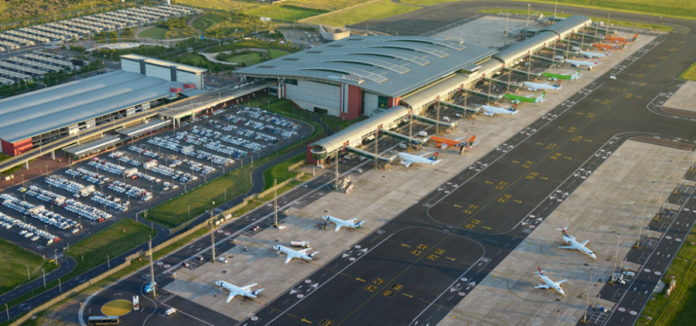

The introduction of additional wide-bodied passenger flights into Durban, as well as the increased frequency of chartered aircraft using King Shaka International Airport, helped Durban’s international cargo volumes in Q3 2017 increase by 13.7 per cent over Q3 2016.
This increase comes on the back of the highest-ever recorded cargo throughput during the months of October and November 2017, which exceeded the 1,700 tonne mark per month for the first time.
“Investment in a new specialised outsized cargo handling facility has significantly contributed to our ability to handle bulky shipments, such as large pipes, machinery, vehicles, large animals and even ocean-going 20-foot containers.,” says Dube Cargo Terminal executive Mlibo Bantwini. “This infrustructure, as well as the systems that we have in place, has enabled our supply-chain specialists to respond quickly to the needs of our freight forwarders by providing them with a reliable and competitive solution for their charters flying into Durban.”
The latest chartered aircraft handled by Dube Cargo Terminal (pictured) was a Boeing 747-400ERF freighter, operated by AirBridgeCargo Airlines, which had a payload of 30 tonnes of heavy duty seaflex marine hoses.
Dube Cargo Terminal has demonstrated a positive trend over the last seven years since the airport opened in 2010, with cargo volumes having grown by 138 per cent. Cargo volumes are still forecast to grow by up to 12 per cent by the close of FY 2017/18.
Further growth is anticipated at Durban’s King Shaka International Airport as Qatar Airways has announced its intentions to increase its capacity on the Durban – Doha route with the introduction of the larger Boeing 777-300ER aircraft as of 28 March 2018, which will bring on board an additional 416 weekly seats on its four times weekly schedule, while further increasing the weekly cargo capacity on the route by 15-23 tonnes per flight.
In October, Air Mauritius increased its frequency to three flights per week on its Durban – Port Louis route, while the peak season of December and January spurred Emirates to increase its frequency on the Durban – Dubai route.









